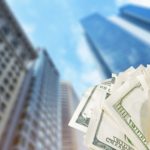
Section 1: Understanding the Federal Reserve (FED)
” Introduction to the FED and FOMC”
Summaries
- Understanding the Federal Reserve (FED) > Section I - Introduction to the FED and FOMC
Understanding the Federal Reserve (FED) > Interactive Video Lectures > Section I – Introduction to the FED and FOMC
- Our discussion will be focusing on the Federal Reserve and the impact the Fed has on the short end of the market.
- Our central bank, the Fed as we know it today, is actually the third central bank in the history of the US, and this most recent effort was established in 1910.
- Although most people here in the US are not aware of it, the Fed is a corporation.
- The Fed is an example of an SRO, a self regulating organization.
- There are shareholders in the Fed and those shareholders are the commercial banks.
- Paradoxically, and some might say in this certain conflict, the Fed is also the regulator over its owners.
- There are a total of 12 Federal Reserve Banks in the US, each bank is responsible for member banks located in its district.
- Bank of America is supervised by Fed Atlanta, because that’s where their headquarters are.
- Supervision was one of the preeminent responsibilities of the Fed.
- Another responsibility of the Fed is literally keeping coinage in circulation, keeping money in supply.
- In the late 1980s, Congress passed the Humphrey-Hawkins Act that gave the Fed two other responsibilities:
- Price stability.
- Full employment.
- It is with these two mandates that the chairman of the Fed now has to testify twice a year in front of Congress.
- Now, when we’re worried about the Fed relative to the bond market, we’re not concerned with the Fed.
- When we talk about the Fed relative to interest rates in the bond market, we’re actually talking about a committee of the Fed called the Federal Open Market Committee.
- This is where the power is relative to the bond market, and this is where the power is relative to monetary policy here in the US. Now, within the 12 Feds that we have, each Fed elects a Fed president.
- Now the New York Fed President is always on this committee on a non-rotating basis.
- The reason for that, is when the Fed wants to intercede in the market, when the Fed comes in to buy or sell treasuries as they do sometimes on a daily basis, the Fed has one trading desk.
- So the New York Fed President is always on this committee.
- The Federal Open Market Committee decides, for example, where to put the Fed funds in the US. In the first module, we talked about how the Fed controls and owns the short end of the market.
- That decision to bring the Fed funds rate from five and a quarter where it was back in ’07 all the way down to zero, was a decision of these 12 members.


